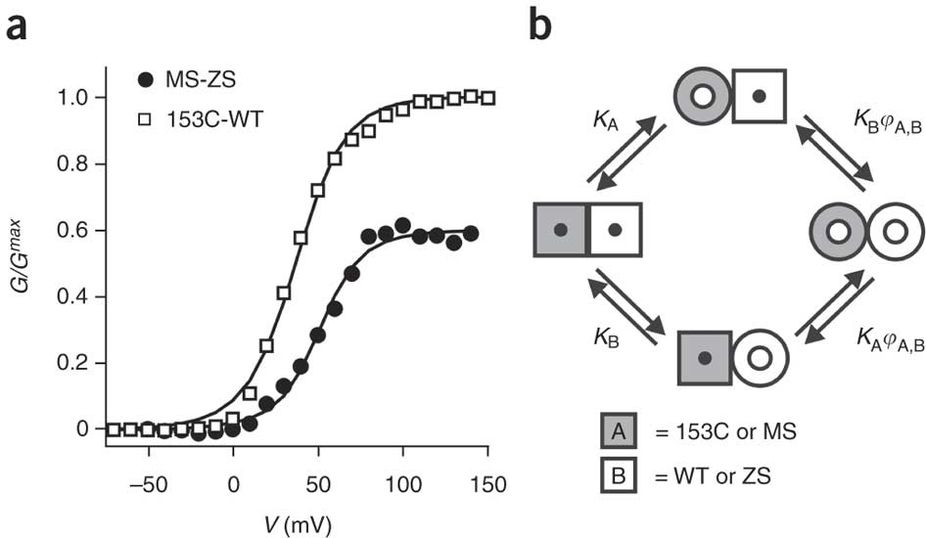
The opening of the two pores of Hv1 voltage-gated proton channel is tuned by cooperativity
Abstract
In voltage-gated sodium, potassium and calcium channels, the functions of ion conduction and voltage sensing are performed by two distinct structural units: the pore domain and the voltage-sensing domain (VSD). In the hydrogen voltage-gated channel 1 (Hv1), the VSD, unusually, performs both functions. Hv1 was recently found to dimerize and to form channels made of two pores. However, the channels were also found to function when dimerization was prevented, raising a question about the functional role of dimerization. Here we show that the two subunits of the human Hv1 dimer influence one another during gating, with positive cooperativity shaping the response to voltage of the two pores. We also find that the two voltage sensors undergo conformational changes that precede pore opening and that these conformational changes are allosterically coupled between the two subunits. Our results point to an important role for dimerization in the modulation of Hv1 activity.